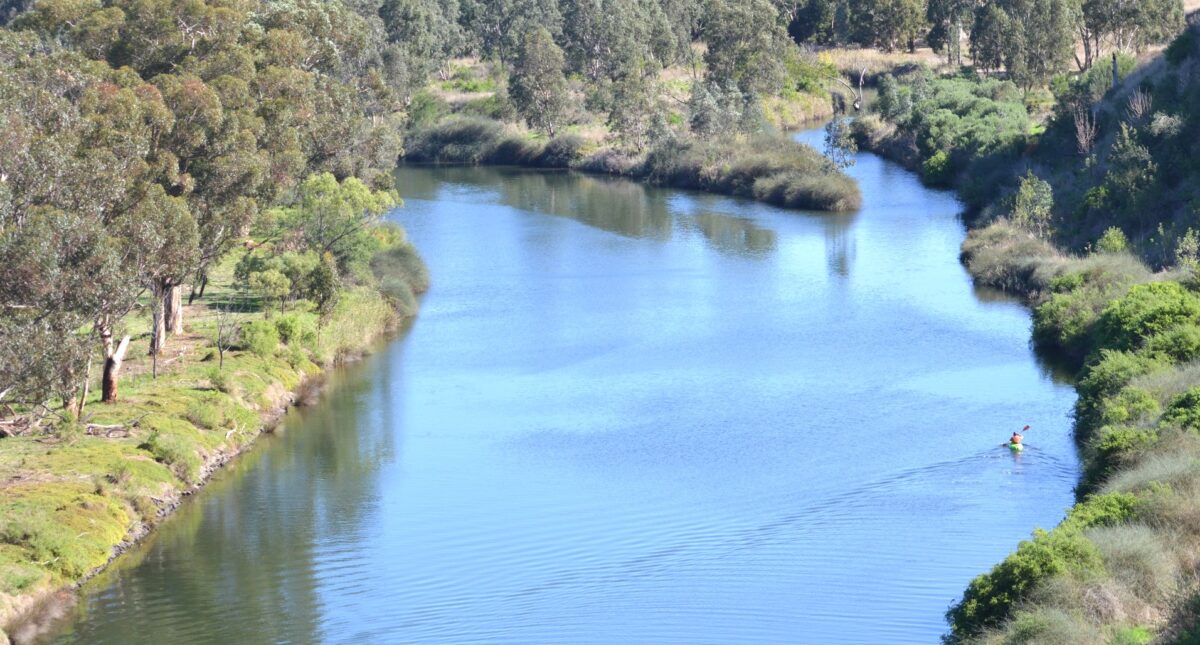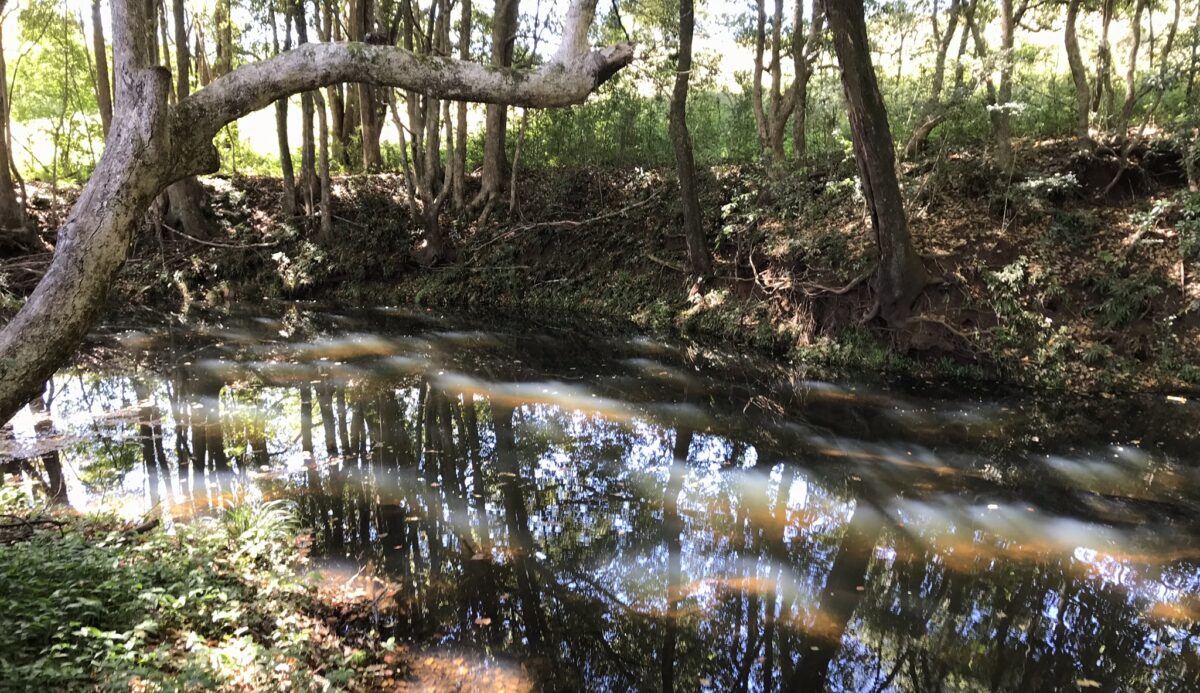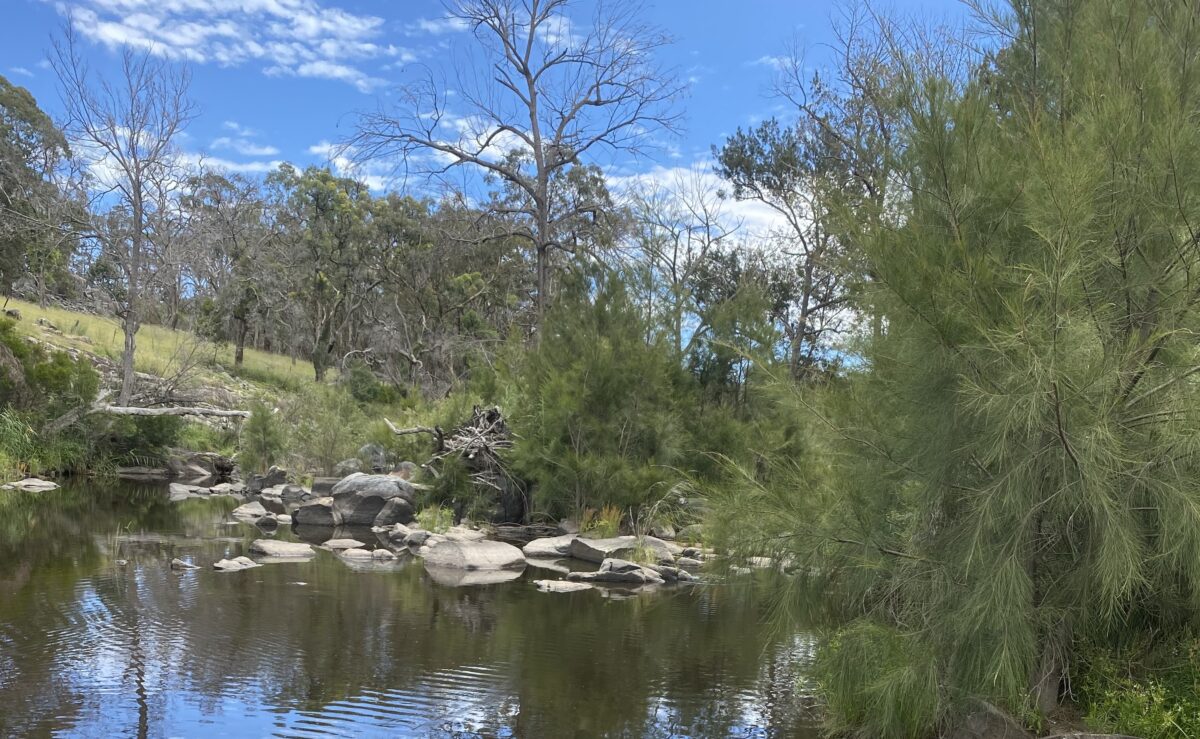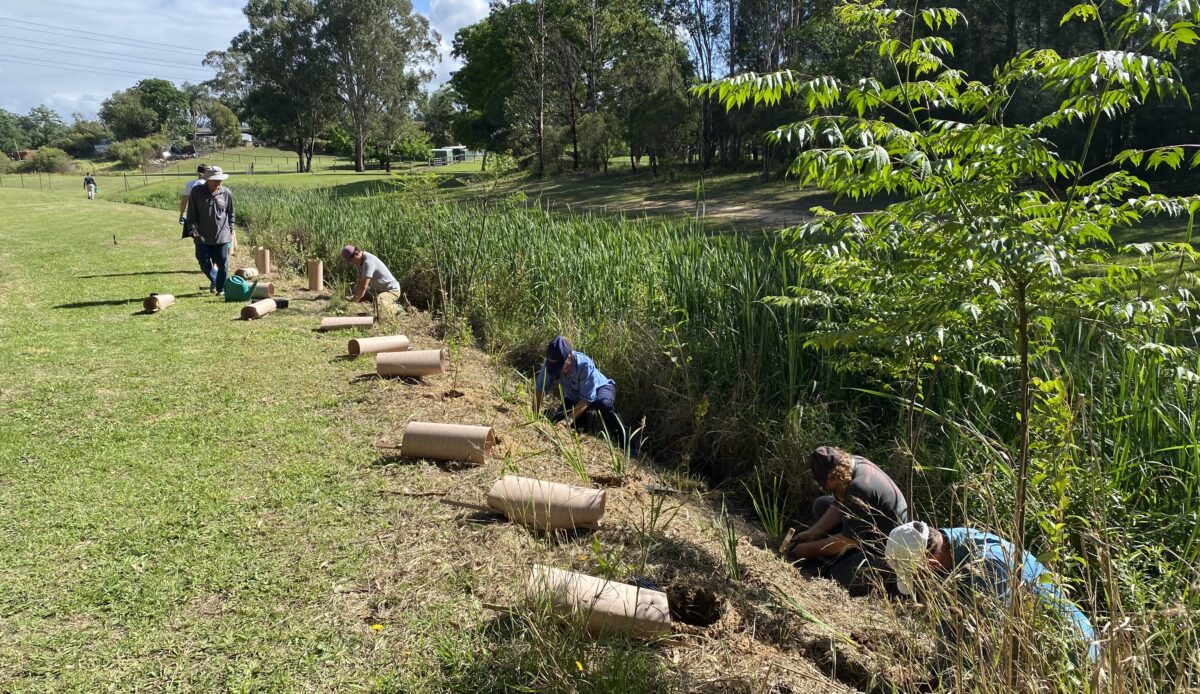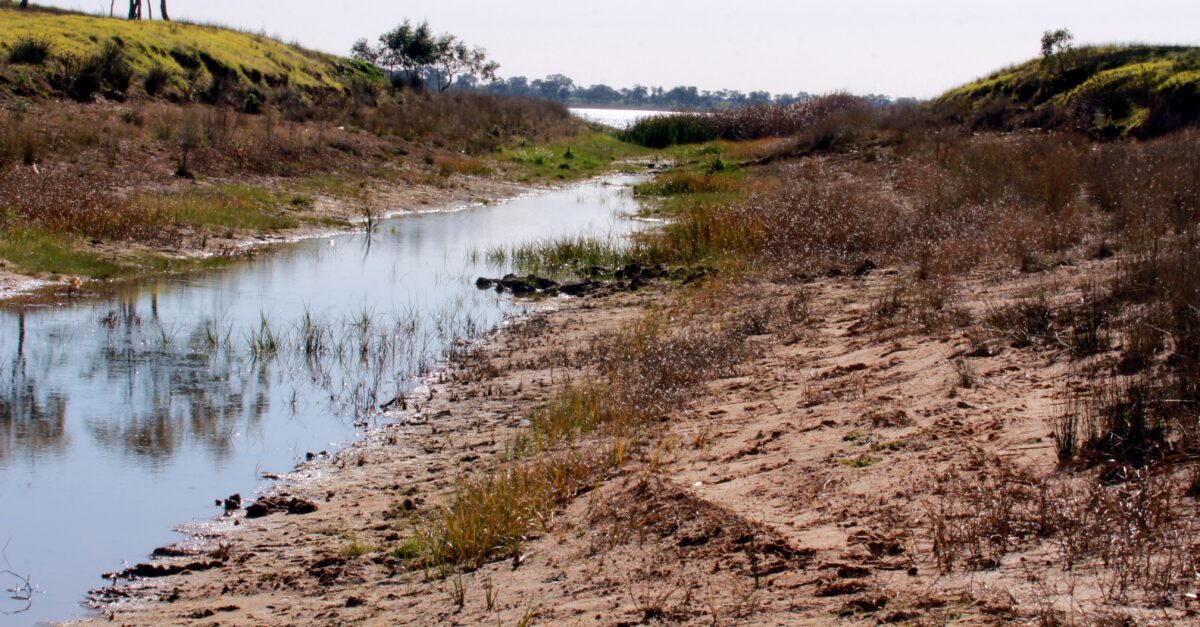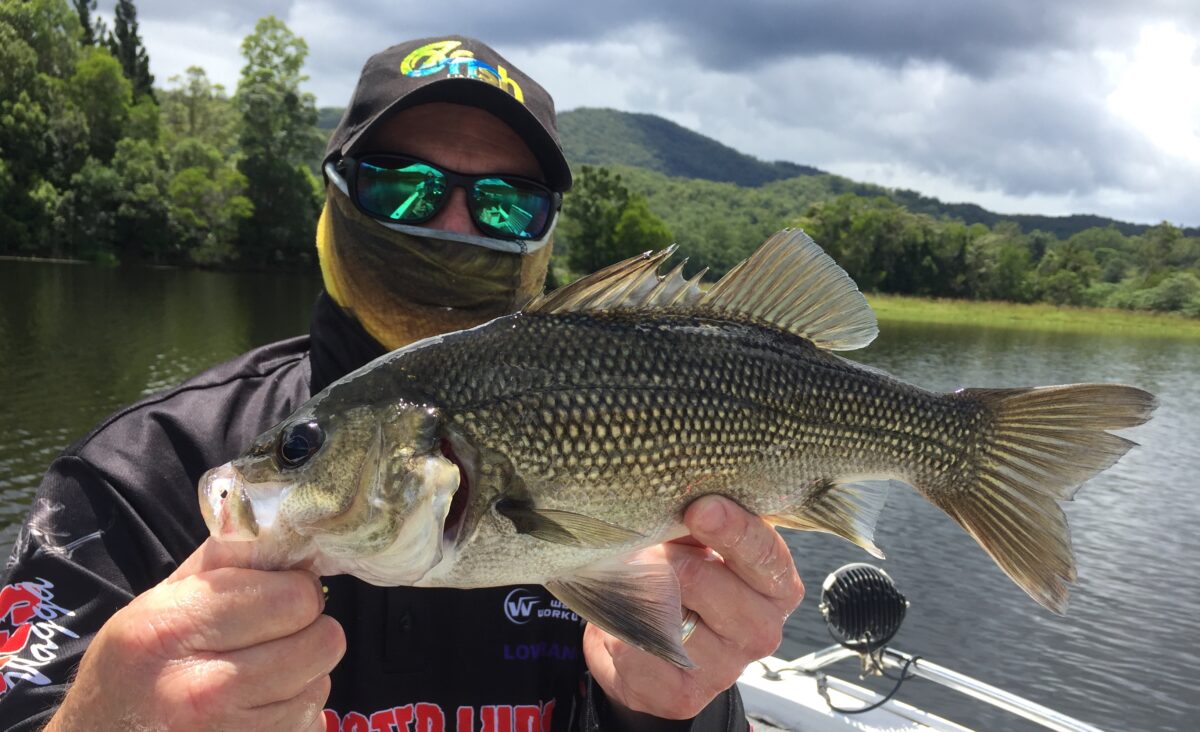Unpack Habitat – Riparian Zones
As part of the Growing River Stewardship program OzFish, supported by the NSW Government’s Environmental Trust, are unpacking habitat in an eight-part series in which we explore key fish habitat. This week we are looking into riparian zones.
What is a riparian zone?
Riparian zones, riparian areas, and riparian lands are all the same thing. They are the areas next to a waterway. For example, the land alongside creeks, streams, gullies, rivers and wetlands. The word riparian comes from the Latin word ripa which means river bank.
What are they like?
Riparian areas are very diverse and what you’ll find there depends on many factors including temperature, rainfall, the surrounding habitat and whether or not they have been disturbed by human activity. Take an urban river for example. Perhaps it’s bordered by a bike path and has highly modified banks, maybe there aren’t many trees around and instead there is a manicured lawn running all the way to the water’s edge. Compare that with what you might find on the edge of an alpine stream or bordering an outback creek or alongside a waterway running through agricultural land. Some riparian zones have steep banks and some do not. Some have regular water flows year-round and some completely dry out at certain times of the year. So basically, each riparian zone is unique however, there are some key similarities.
Generally speaking, thanks to the presence of water and comparably high levels of nutrient flow, riparian vegetation is often denser, faster growing and has more layers or strata (e.g. grasses, shrubs, trees of differing heights) than adjacent land. The higher level of nutrients, compared to surrounding areas, is all thanks to gravity and downhill flow of water. When water runs downhill towards a river or lake, it picks up nutrients and sediment along the way and deposits them en route, often on the waterway’s edge.
An important thing to remember is that healthy land supports healthy waterways. Riparian areas are inextricably linked with our waterways and our native fish need good quality riparian habitat to thrive.
Why is riparian vegetation important to fish?
Fish rely on riparian vegetation for bank stabilisation, run-off water filtration, good water quality, water temperature regulation, shelter habitat provision, and as a key food source.
Riparian areas play an incredibly important role when it comes to filtering the water entering our waterways. Sometimes referred to as biofilters, riparian areas are superstars when it comes to removing pollutants, excess nutrients, and sediment from water running off the land.
In order to be an effective biofilter and habitat corridor, the buffer zone should be at least 20 meters wide. Lomandra, a native grass, is a great example of a type of vegetation that can be used as a biofilter, preventing sediment and other bits and pieces from entering waterways.
Understanding why it’s important to remove pollutants like herbicides, pesticides and other nasty chemicals that we put in to the environment is a bit of a no–brainer. But why is it important to stop excess nutrients from reaching our waterways? Plants love things like nitrogen and phosphorus, so what harm could come from putting additional building blocks of life into the ecosystem? Well, it’s all about balance. An excess of nutrients can lead to an increase in algae growth or an algal bloom which in turn can result in the oxygen in the water being used up by the bloom and not available to fish. A drop in oxygen in our waterways is often fatal for fish populations.
Another great thing that riparian vegetation can provide for fish is a source of shade. I know I definitely prefer swimming in the shade on a scorching hot summer’s day and fish are no different. The shade provided by riparian vegetation means that there is less of a fluctuation in water temperature between day and night and between seasons, especially in narrower creeks. Changes in water temperature and light, caused by a lack of riparian vegetation, can actually affect fish in a whole host of ways including disrupting reproduction, have direct effects on mortality rates, growth rates, metabolic rates and disease resistance. Needless to say, these changes are not for the better.
Overhanging trees and plants provide fish with protection from predators. Hiding under overhanging branches is a great way to avoid ending up as someone else’s dinner.
Another thing fish love are all of delicious insects that live amongst the riparian vegetation. Have you ever noticed that fish seem to hang around under overhanging plants? That is no accident, fish know exactly what’s going on and they are actively waiting for an unsuspecting insect to come down to the water so they can catch it for lunch. A whopping 40% of a fish’s diet can come from land-based insect fall from the riparian zone.
Casuarinas in a riparian zone providing shade, habitat, shelter and hopefully some tasty insects for fish.
And finally, remember how important snags are for native fish, including the iconic Murray cod? Well, how do you think snags normally end up in waterways? That’s right, riparian vegetation is a natural and sustainable supply of snags as they age and topple into the waterway. Great job Mother Nature.
How can I look after riparian areas?
Riparian areas can be fragile and vulnerable to degradation so it’s very important that we are responsible stewards of these critical fish habitats. They can often be damaged by things like clearing, human access (roads/tracks), gravel extraction, cropping, and livestock grazing and trampling. Here’s a rundown of things you can do to help look after your local riparian areas.
Get planting. A lot of vegetation has been cleared from riparian zones over the years, it’s important that we revegetate these areas appropriately. If you’ve got questions about what type of species would be good on your property, get in touch with your local OzFish Chapter or Landcare group. You can also get involved in a local planting day with your OzFish Chapter. Contact your local chapter to see what they’ve got coming up.
Swap willows and camphor laurels for natives. These two introduced species wreak havoc on our native ecosystems. Whilst willows used to be popular for bank stabilisation, we now understand that they are not good for fish as they can clog up smaller waterways, negatively impacting flows and don’t contribute to native fish diets in the way that native trees and shrubs do.
Take your fishing litter. Always.
If you have livestock, fence the riparian zone off to prevent grazing and trampling, OzFish can help you with this and even a new trough to give your stock somewhere easy to drink from.
Try and stick to the path as much as possible. Walking or driving on vegetation is going to damage the important plants in the riparian zone.
A degraded riparian area
Fishing in riparian areas
We are lucky to have some incredibly beautiful waterways to explore and fish in Australia. If you’re fishing in riparian areas, try and stick to paths and remember to always take your rubbish with you. It’s also important to be mindful of snakes and other creatures that call them home, and changing water levels in intertidal zones.
Bass are a great fish to target from riparian areas. They love hanging out in the shade so try and find yourself a nice spot with some overhanging trees. Under the shade of a casuarina, (aka swamp/she oak), is a great example of where you’re likely to snag a bass or two.
Refining your casting skills and using either bait or a lure shaped like a bug, cast into the share of a native tree overhanging the creek. Remember, before how we said that this is exactly where fish like to hang out, waiting for an insect to drop in the water? Well now, your lure is that insect and just like that, you’ve caught yourself a bass!

